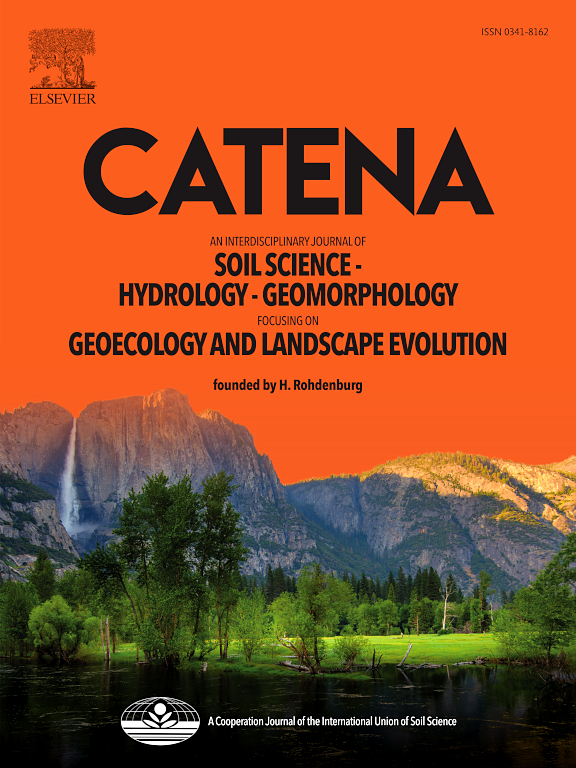15 years ecohydrological long-term monitoring of the artificial catchment Chicken Creek – A brief summary
IF 5.4
1区 农林科学
Q1 GEOSCIENCES, MULTIDISCIPLINARY
引用次数: 0
Abstract
Ecosystems exhibit a highly complex nature and have been dynamically changing by linked abiotic and biotic factors such as climate, vegetation and soil fauna. Owning to the actions and feedbacks of these factors, ecosystems show an inherent degree of locally heterogeneous properties and structures at multiple spatial and time scales.
Here, the artificial catchment “Chicken Creek” represents a unique and outstanding site to study an ecosystem at the initial stage of development. The hydrologic catchment is located about 20 km south of the city Cottbus (Germany). The approximately 6-ha catchment area was built in 2005 of coarse-textured quaternary sediments from the adjacent brown coal mine and forms a back- and foot-slope that flattens out to a pond. A clay liner of 2–3 m thickness seals the catchment at the bottom, which allows the formation of a local water body fed only by precipitation. After construction the site was left to an unrestricted and unmanaged succession.
To track the several ecosystem processes and newly emerging structures the Chicken Creek catchment is equipped with a comprehensive ecological monitoring network. A network of more than 40 wells and two weirs recording the groundwater levels, flows of water and elements. Three weather stations observing meteorological parameters. Annual aerial pictures and vegetation monitoring revealing the floral colonisation of the area. This contribution describes the diverse and extensive working program as well as presents highlights of 15 years ecological monitoring in the catchment area.
求助全文
约1分钟内获得全文
求助全文
来源期刊

Catena
环境科学-地球科学综合
CiteScore
10.50
自引率
9.70%
发文量
816
审稿时长
54 days
期刊介绍:
Catena publishes papers describing original field and laboratory investigations and reviews on geoecology and landscape evolution with emphasis on interdisciplinary aspects of soil science, hydrology and geomorphology. It aims to disseminate new knowledge and foster better understanding of the physical environment, of evolutionary sequences that have resulted in past and current landscapes, and of the natural processes that are likely to determine the fate of our terrestrial environment.
Papers within any one of the above topics are welcome provided they are of sufficiently wide interest and relevance.
 求助内容:
求助内容: 应助结果提醒方式:
应助结果提醒方式:


